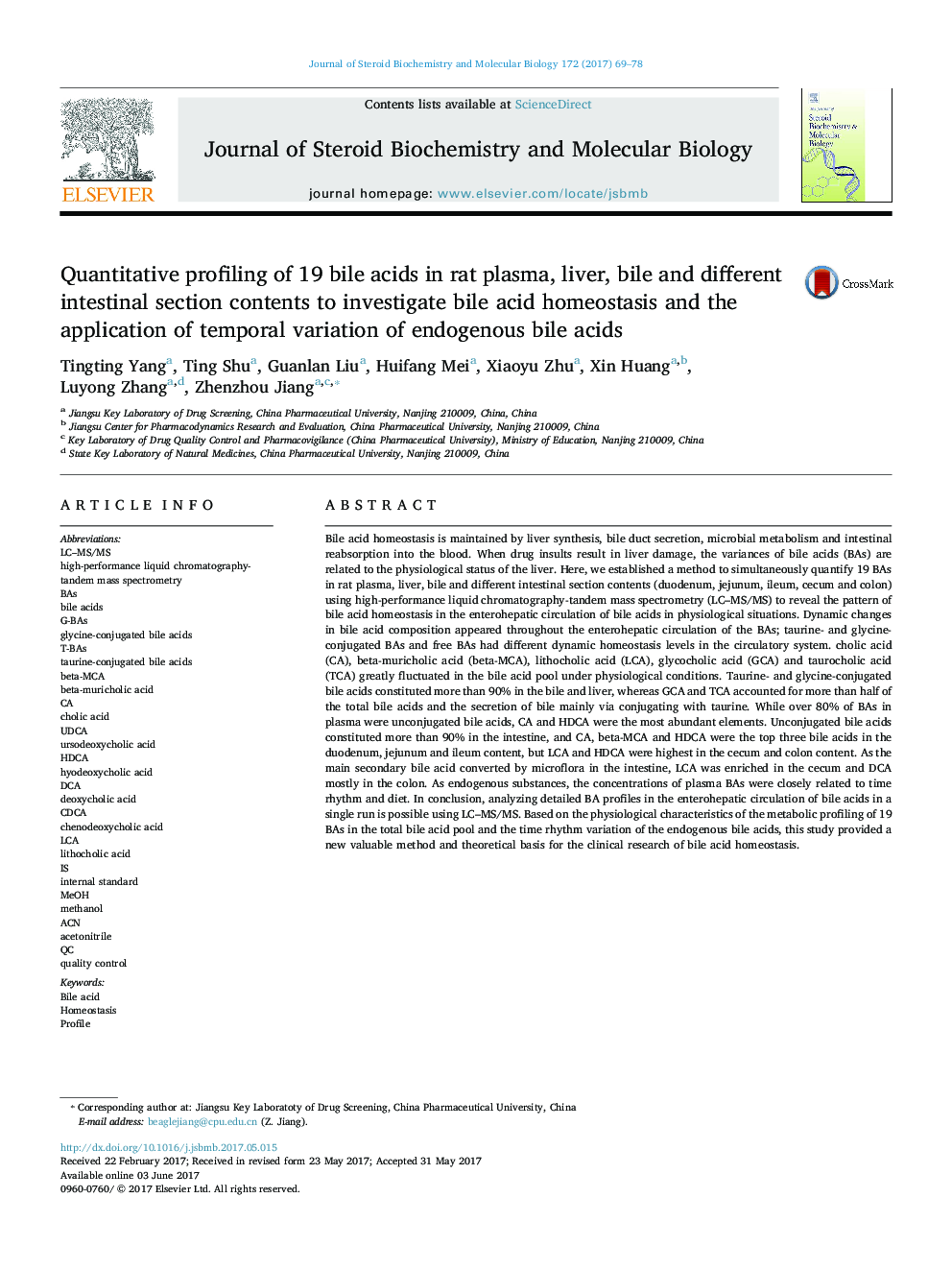| کد مقاله | کد نشریه | سال انتشار | مقاله انگلیسی | نسخه تمام متن |
|---|---|---|---|---|
| 5513041 | 1540975 | 2017 | 10 صفحه PDF | دانلود رایگان |
- Validated method for the simultaneous-profiling of 19 bile acids containing various solid materials, organs and tissue fluid using LC-MS/MS techniques in a single run .
- Dynamic changes of bile acid composition appeared throughout the BAs enterohepatic circulation.
- Reveal the pattern of bile acid homeostasis throughout the gut-liver axis.
- Applied to the time-based variation of the endogenous bile acids.
Bile acid homeostasis is maintained by liver synthesis, bile duct secretion, microbial metabolism and intestinal reabsorption into the blood. When drug insults result in liver damage, the variances of bile acids (BAs) are related to the physiological status of the liver. Here, we established a method to simultaneously quantify 19 BAs in rat plasma, liver, bile and different intestinal section contents (duodenum, jejunum, ileum, cecum and colon) using high-performance liquid chromatography-tandem mass spectrometry (LC-MS/MS) to reveal the pattern of bile acid homeostasis in the enterohepatic circulation of bile acids in physiological situations. Dynamic changes in bile acid composition appeared throughout the enterohepatic circulation of the BAs; taurine- and glycine-conjugated BAs and free BAs had different dynamic homeostasis levels in the circulatory system. cholic acid (CA), beta-muricholic acid (beta-MCA), lithocholic acid (LCA), glycocholic acid (GCA) and taurocholic acid (TCA) greatly fluctuated in the bile acid pool under physiological conditions. Taurine- and glycine-conjugated bile acids constituted more than 90% in the bile and liver, whereas GCA and TCA accounted for more than half of the total bile acids and the secretion of bile mainly via conjugating with taurine. While over 80% of BAs in plasma were unconjugated bile acids, CA and HDCA were the most abundant elements. Unconjugated bile acids constituted more than 90% in the intestine, and CA, beta-MCA and HDCA were the top three bile acids in the duodenum, jejunum and ileum content, but LCA and HDCA were highest in the cecum and colon content. As the main secondary bile acid converted by microflora in the intestine, LCA was enriched in the cecum and DCA mostly in the colon. As endogenous substances, the concentrations of plasma BAs were closely related to time rhythm and diet. In conclusion, analyzing detailed BA profiles in the enterohepatic circulation of bile acids in a single run is possible using LC-MS/MS. Based on the physiological characteristics of the metabolic profiling of 19 BAs in the total bile acid pool and the time rhythm variation of the endogenous bile acids, this study provided a new valuable method and theoretical basis for the clinical research of bile acid homeostasis.
Journal: The Journal of Steroid Biochemistry and Molecular Biology - Volume 172, September 2017, Pages 69-78
